The six Mount Kilimanjaro climbing routes vary not only in length, cost and scenery. They also have different difficulty levels and different success rates.
- Selecting a Kilimanjaro climb route is one of the most important decisions you have to make.
- The other one is selecting a Kilimanjaro tour operator/trekking agency.

There is no single best Mt. Kilimanjaro climb route. Which route up Kilimanjaro is the best for you depends on several factors:
- The time and money you have available
- Previous experience and fitness
- The time of the year
- Personal preference
Let’s look at the individual Kilimanjaro climbing routes and who they are suitable for:
- The Marangu Route: the only Kilimanjaro climb route that offers hut accommodation.
- The Machame Route: the most popular climbing route up Kilimanjaro.
- The Rongai Route: the easiest route on Kilimanjaro.
- The Shira Route: this one catapults you to some serious altitude on the first day.
- The Lemosho Route: hands down the most beautiful Kilimanjaro climb route, but expensive.
- The Umbwe Route: the most difficult and demanding route on Kilimanjaro, and the most spectacular.
01. The Marangu Route
The Marangu Route is jokingly referred to as the “Tourist Route” or “Coca-Cola Route.” It’s called “Tourist Route” for two reasons. One reason is simply its popularity: it makes this climb route somewhat touristy.
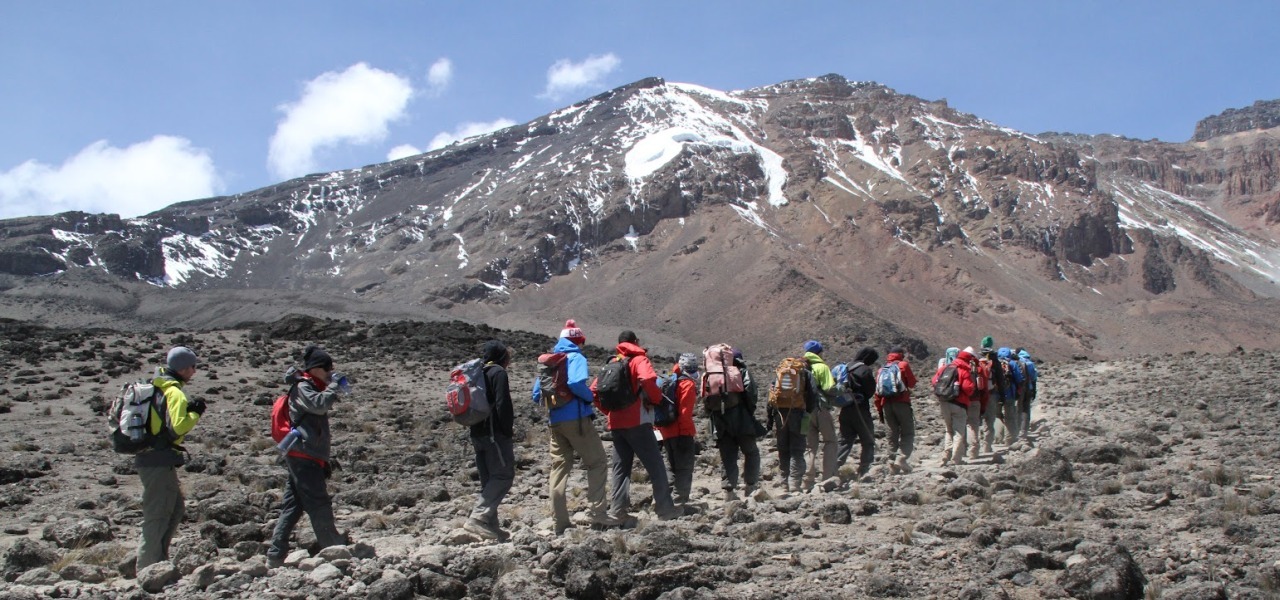
The Marangu route is also the only climbing route that uses the same path up and down, which contributes to it being the most crowded climb route on Kilimanjaro.
The Marangu route is a comfortable walking path with a very steady, gradual slope (at least until you reach the last camp). This gave the Marangu route a reputation as an “easy” climb route.
And that’s the other reason for the name “Tourist Route“: because it is supposed to be “easy”, the Marangu route is used by many shockingly unprepared “tourists”, rather than trekkers.
The name “Coca Cola Route” stems from the sleeping huts along the route. They sell the stuff (as well as bottled water and candy bars). The Marangu route is the only Kilimanjaro climbing route that offers hut accommodation. Camping is not allowed.

A climb on the Marangu route is comparatively cheap. You need no camping equipment (no cost for extra porters to carry the equipment) and you can do the climb in five days/four nights. Also, many cut throat budget operators run treks on this route.
But make no mistake: the Marangu route is NOT easy and it is NOT for tourists! It is a serious climb with very low success rates. Only a quarter to a third of the climbers on this route reach the summit of Kilimanjaro.
The reasons?
- The “tourists” on this route are shockingly unprepared.
- A five day climb does not allow for sufficient acclimatization, many climbers have to turn around because of altitude sickness. (You can add an optional acclimatization day.)
- Budget operators have much lower client success rates. Equipment, food, experience level of guides, all that makes a big difference and all that costs money.
- The last day before the summit attempt is a long one and covers 1000 m of altitude difference. There is not much time to recover or acclimatize before setting out again at midnight to climb another 1200 m. Not good.
Add to that the lack of scenic variety compared to the other routes, and you wonder why anyone would want to climb Kilimanjaro on the Marangu route.

Well, even if not as scenic as other routes, it is still a spectacular experience with great views all along. There are two reasons why you may want to climb Kilimanjaro on the Marangu route:
1. You absolutely can not, under no circumstances, imagine sleeping in a tent for five nights or more. (But don’t think those huts offer luxury accommodation or that there are any amenities. There aren’t. You get a mattress and pillow – no linen – on a bunk bed, and you get to eat in a crowded dining hall. No less and no more.)
2. The other reason to select Marangu is if money is your main consideration, before everything else. I you don’t care about scenery, aren’t worried by big crowds, and are willing to accept a reduced chance of success, Marangu is the cheapest option you have. (But do yourself a favor and take that optional extra acclimatization day.)
02. The Machame Route
The Machame route is also called the “Whiskey Route“, a reference to the “Coca Cola Route” Marangu. Machame is “tougher” than that.
Machame is indeed a more difficult climb in some respects, but it does have much higher success rates than Marangu, especially if you choose the seven day version. (According to estimates about 60% of the climbers on Machame make it to the summit, and over three quarters reach the crater rim.)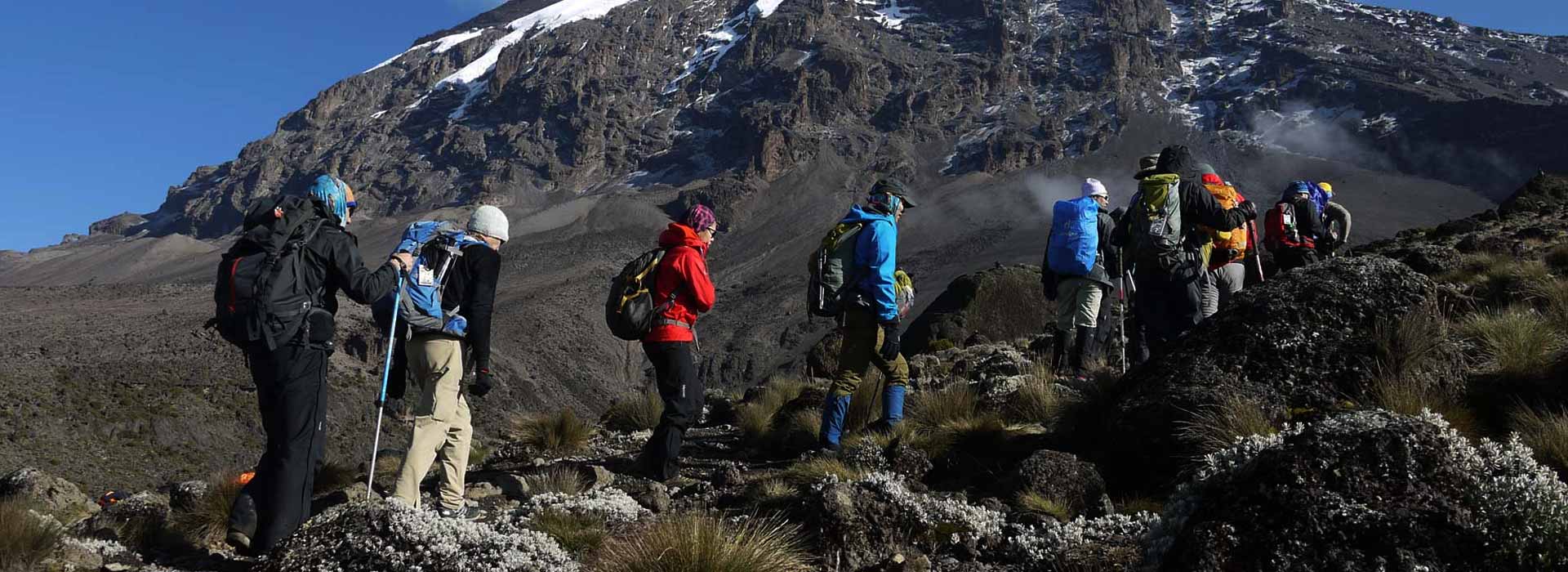
The seven day version gives you a very short day before your summit attempt, which leaves plenty of time to recover, acclimatize and get ready. The six day version has the same problem as the Marangu route in that respect. See above.
The Machame route is not technically difficult.
It is more strenuous. The trail is often steeper and it involves many ups and downs, crossing a succession of valleys and ridges. But that’s why it is also one day longer than Marangu.
Still, for people who have never done any longer hikes in their life and are not well prepared it can be demanding and tiring. There is also the Barranco Wall to cross, a very steep, one and a half hour climb that will require you to occasionally use your hands for balance. (It sounds and looks a lot more difficult than it actually is!)

Well, and you have to camp all the way. If you go with a budget operator that alone can be demanding, especially if the weather turns bad.
As for scenery, the Machame route is absolutely spectacular: the Shira Plateau, the Lava Tower, the Barranco Wall… You start from the west, circle Kibo on the southern side, and then descend on the Mweka route in the south east. The variety is hard to beat. Machame is considered the most scenic Kilimanjaro climbing route.
For that reason the Machame route has become the most popular climb route on Kilimanjaro. The advantage of that is that prices have dropped and you can find many budget operators on it. The disadvantage is that the Machame route is very crowded.
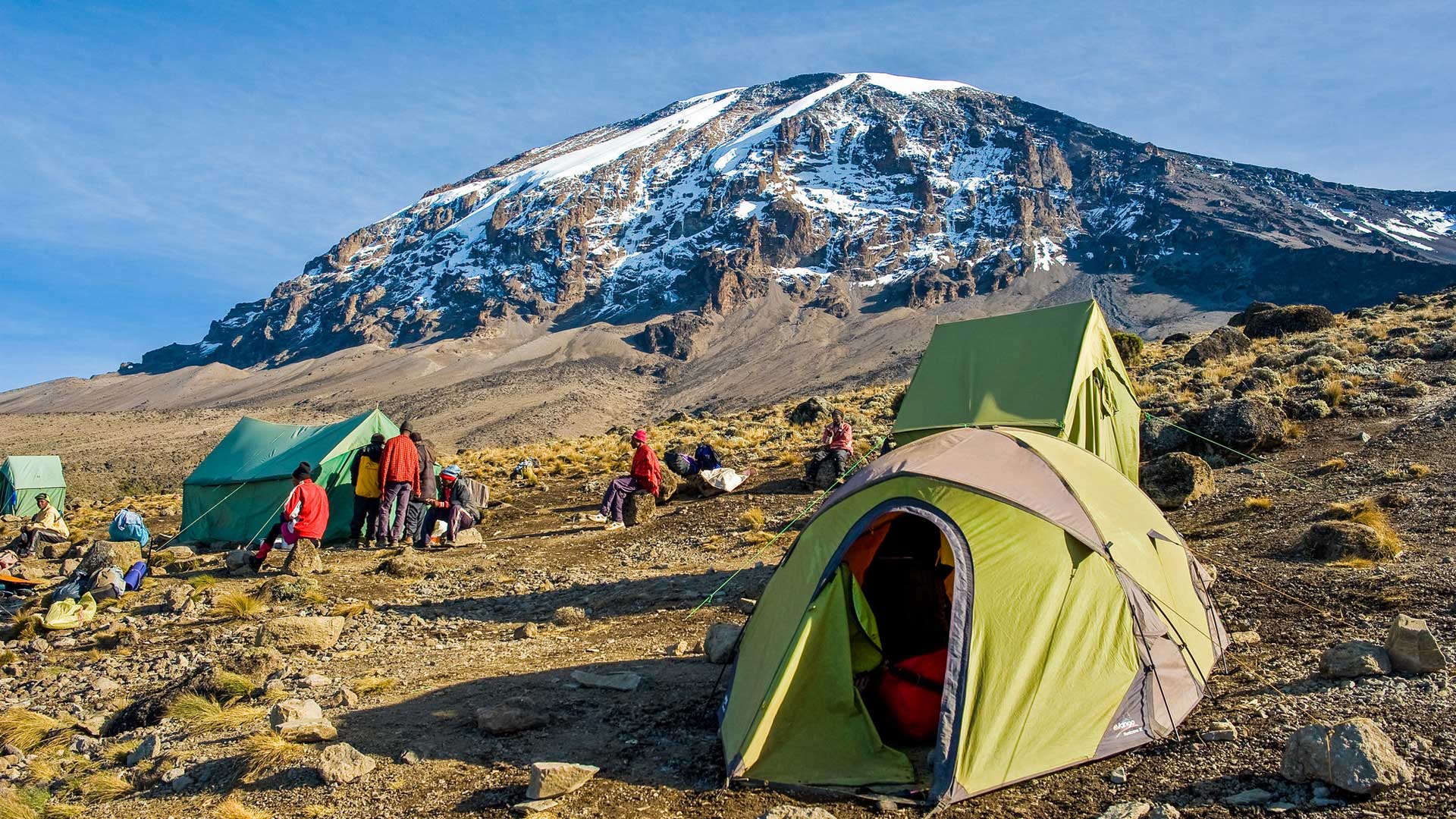
If you are confident in you ability to hike in difficult terrain for days in a row, if you like camping and nature, but money is very tight, then Machame may be the Kilimanjaro climb route of choice for you. You will have to put up with the crowds.
03. The Rongai Route
The six day version of the Rongai route (via Mawenzi Tarn) is the route of choice for those looking for an easy climb with excellent success rates, but away from the crowds, with great scenery and a wilderness feel to it. It is slightly more expensive.

The Rongai route is the only climb route that approaches Kilimanjaro from the north. The descent is in the south-east via the Marangu route, so you get to see both sides of the mountain.
The extra transport cost makes a Rongai route climb more expensive.
It is also more expensive because there is less demand and fewer budget operators.
The Rongai route has a reputation of being less scenic, but even if there is not quite as much variety as on Machame, it is still a spectacular route, especially on the later days. The camp beneath Mawenzi Peak is one of the most scenic on the mountain. Rongai is also one of the routes where seeing wildlife on Kilimanjaro is still possible.

The Rongai climb has the same easy, gradual climb profile as the Marangu route. It rises very steadily, there aren’t any steep climbs involved, no major ups and downs.
However, the camps are staggered a lot better than on Marangu. On your last day before the summit attempt you only ascend a few hundred meters, and you have all afternoon to rest and acclimatize.
With a good operator you have an 80 – 90% chance to make it to the crater rim, and 70 – 80% will make it to Uhuru Peak.

(If you have some trekking experience your chances to make it to the summit could be as good as 90%. (The remaining 10% come down to weather, individual preparation, individual altitude tolerance and unforeseen mishaps.)
The Rongai route has another important advantage: the northern side of Kilimanjaro is a lot drier than the other side. Your chances NOT to get soaked on the first days are excellent. Especially if you climb Kilimanjaro during one of the wetter periods of the year, using Rongai makes a lot of sense.

04. The Shira Route
The Shira route approaches Kilimanjaro from the west and then joins the Machame route. Hence everything that has been said about the Machame climb route also applies to the Shira route.
There are several variations to the Shira route. It can be done in six days but most operators also offer a longer version of it. (A really good operator will also time their departure and stagger their camps in a way that avoids the heaviest traffic on the Machame trail.)

The first day on the Shira route is different to other climb routes:
It follows a four wheel drive route. So you either walk on the road for most of the day (not very attractive) or you opt to drive as far as possible.
The latter not only means you skip the first stage of the climb, the rainforest zone. It also means that you catapult your body to a height of over 3500 m/11500 ft without time for proper acclimatization.

If you live near sea level and you only flew into Tanzania the day before, this may hurt.
Overall, Shira has excellent success rates if the schedule involves a night at Karanga Valley (making for a short and easy day before the summit day). However, the good success rate is partly due to the operators on this route being higher level than on the more crowded routes.
Like the Machame route, the Shira route is for people who are confident in their ability to hike in difficult terrain and camp out for extended periods. It has less traffic but it is a more expensive option. You should also be confident about the way you will react to the altitude on the first day.
05. The Lemosho Route
Like the Shira route, the Lemosho route approaches Kilimanjaro from the west and then joins the Machame route. Hence everything that has been said about the Machame climb route also applies to the Lemosho route.
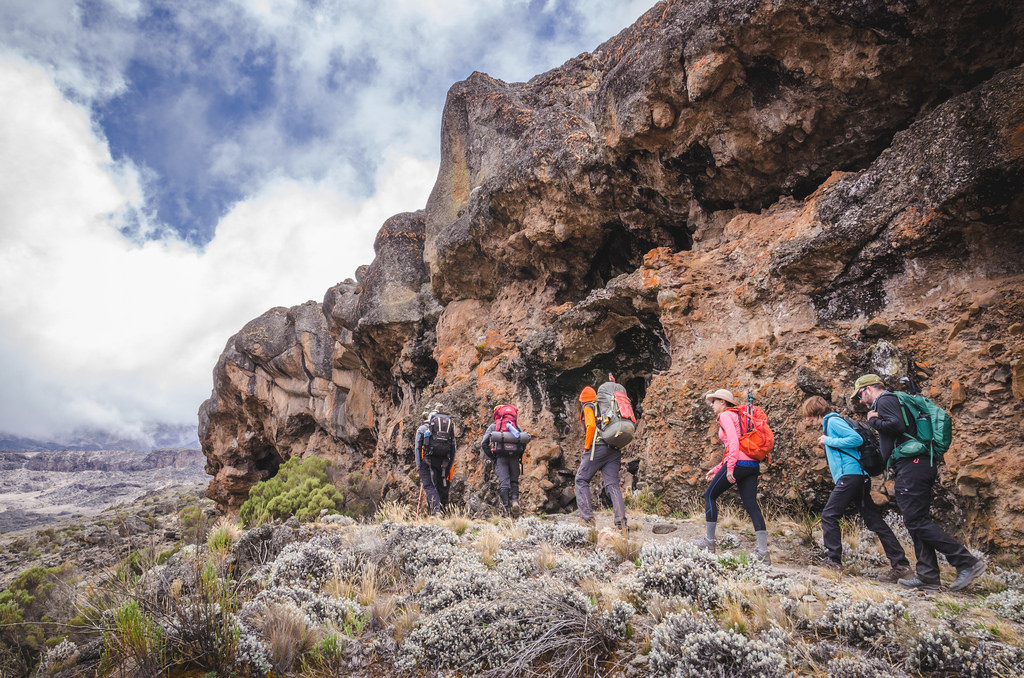
The first two days on the Lemosho route take you through beautiful and very remote rainforest, with good chances of seeing wildlife. The start of the trail is also known as the Lemosho Glades.
Lemosho is usually a longer trek, seven or eight days, and there are many variations of it. Which one you take depends on the operator. (A really good operator will also time their departure and stagger their camps in a way that avoids the heaviest traffic on the Machame trail.)
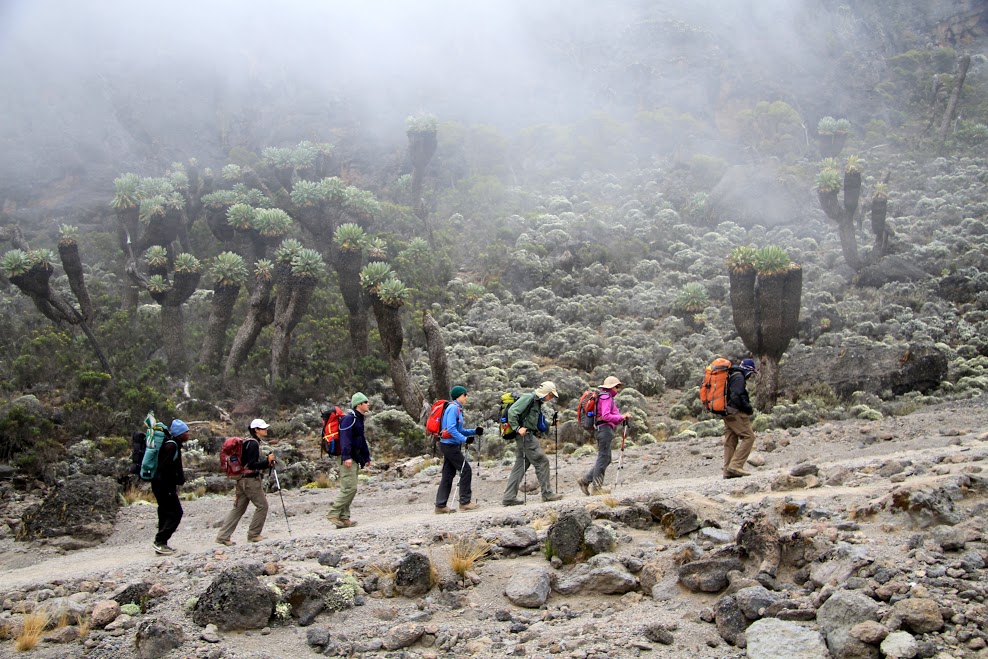
The length, the remoteness and the added transport cost make Lemosho a rather expensive option.
However, the longer itinerary and the fact that there are no budget operators (you can’t do this route on a budget) lead to excellent success rates on this route and it has become quite a popular one.
It is a route for people who are confident in their ability to hike in difficult terrain and camp out for extended periods, who want a superb wilderness experience and for whom cost is not the main consideration.

06. Umbwe Route
The route is not a technical route, but it is a very direct, very steep, very tough, and in parts very exposed route.

Umbwe route joins the Machame route near the Barranco Camp on the second night. On the other routes Barranco Camp is reached on the third or fourth night. Goes to show how much steeper Umbwe is.
Parts of the trail on the first day are so steep, they can only be negotiated because the tree roots provide something like steps. The tree roots also serve as handle bars to haul yourself up where needed.
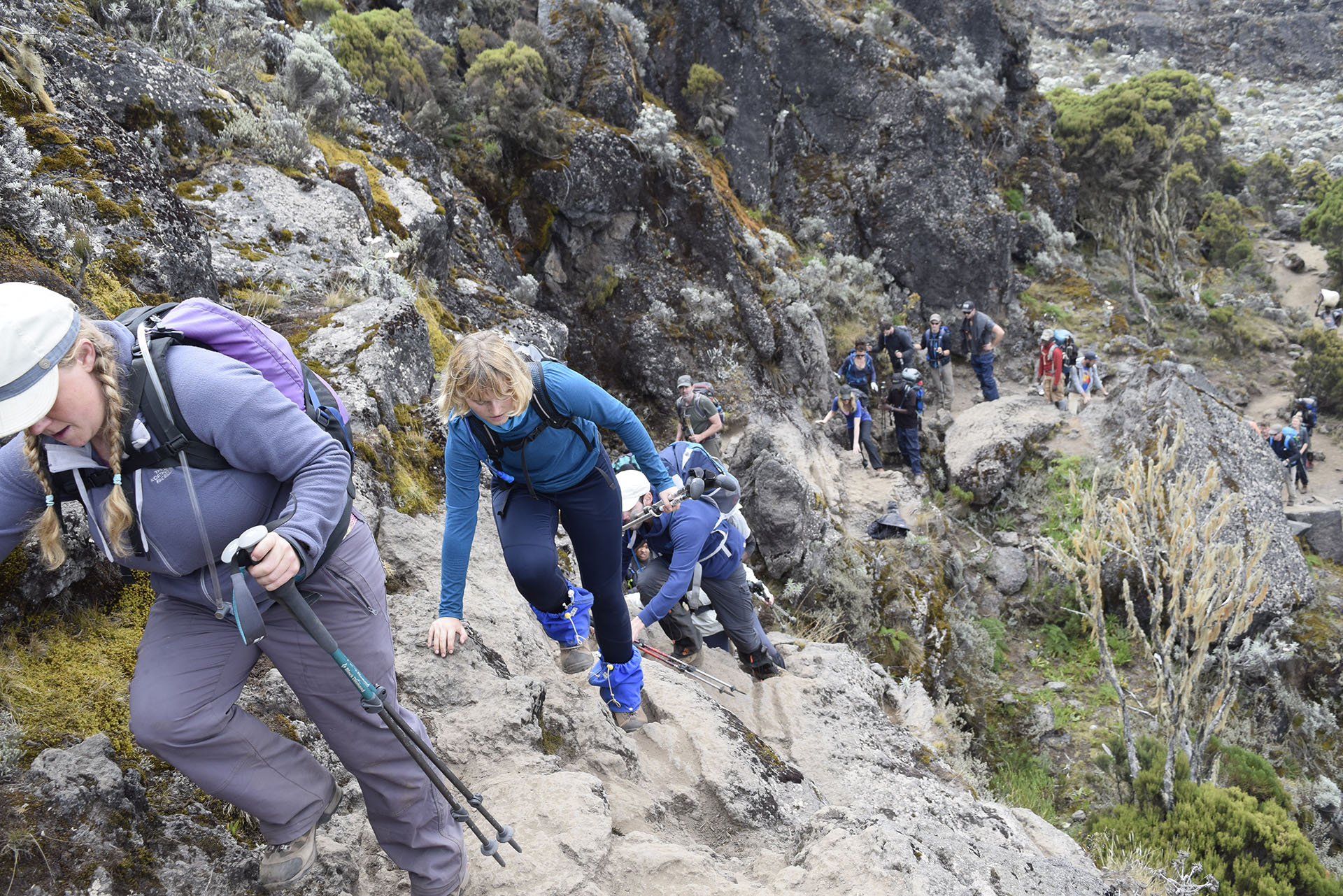
The second day is also steep and uphill all the way. The exposed ridge is not for people uncomfortable at heights… And have a guess why the “Rope Rock” (Jiwe Kamba) is called “Rope Rock”…
This is the most difficult and demanding of all Kilimanjaro climb routes. Don’t even think about it unless you have experience climbing mountains.
Having said that, it is a spectacular route!
